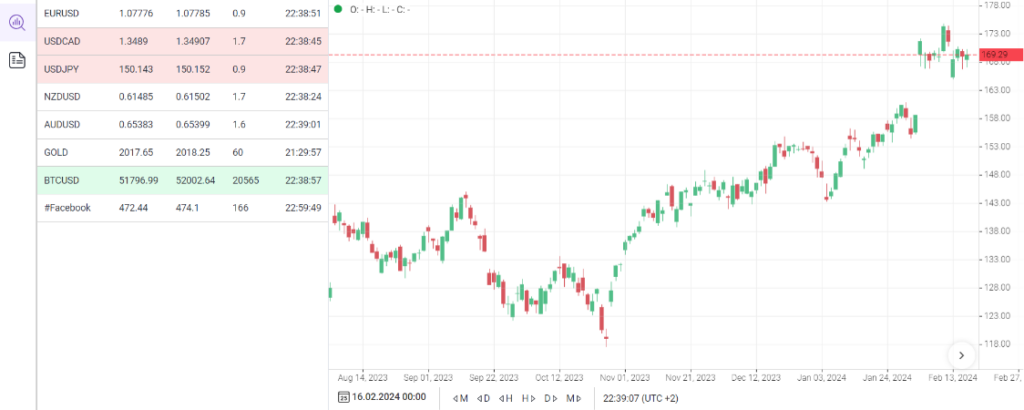Stocks offer investors an opportunity to build wealth by owning shares in successful companies. However, navigating the stock market as a beginner can feel daunting. This guide will break down the basics of how to trade stocks in simple terms. By understanding core concepts and getting the right preparation, anyone can start participating in this important asset class.
What are Stocks?
Stocks, also called shares or equities, represent fractional ownership in a corporation. When you purchase stock, you are essentially buying a small piece of the company. If the business succeeds and turns a profit, shareholders can see the value of their holdings rise over time through share price appreciation and dividend payments.
The two main types of stocks are common and preferred. Common shares typically give holders voting power in company decisions while preferred stock pays a fixed dividend taking priority over common dividends. Blue-chip large caps like Apple and large stable dividend payers are common starting points for beginning investors.
Opening a Brokerage Account To Trade Stocks
To start trading stocks, you’ll need an online brokerage account. A great broker to consider is AdroFx as they offer low trading commission costs with easy digital onboarding. During the sign-up process, you’ll provide identity information and other details that are required.
With AdroFx you can fund your account with many different methods ranging from a bank wire to crypto wallets. After your account is set up you can use Allpips to easily start trading with a clean and easy-to-use interface.

Choosing Individual Stocks To Trade

Beginner investors can build their portfolios through individual stock selection. Consider promising companies within industry sectors you’re familiar with and optimistic about. Research fundamentals like revenue, earnings growth, profit margins, and balance sheet strength. Reputable analysts also issue stock recommendations based on thorough due diligence.
Browse daily financial news for emerging trends influencing industries and specific companies. Consider technical factors such as share price momentum, volume patterns, and support/resistance levels when picking an entry point. Limit risk early on by buying shares worth no more than 5% of capital in any one holding. Leave room for additional purchasing on dips.
Understanding Orders and Trading
Placing a stock order means instructing your broker to buy or sell shares at a specific price or through an automated mechanism. The order types available determine your level of control over trade execution when you trade stocks:
- Market order: Executes immediately at current market price, good for fast trades but risky if prices are volatile.
- Limit order: Only executes at specified price or better, avoids buying too high but may not fill if the price moves away.
- Stop-loss order: Sells if the price drops to a predefined stop point, guards against large losses but could exit prematurely.
Orders placed during trading hours Monday through Friday may fill within minutes or seconds. Confirm details carefully before submitting to avoid mistakes. Understand commissions and any associated fees per trade type.
Diversifying Your Portfolio
While individual stock selection lets you pick promising companies, the inherent risk of anyone holding makes diversification essential for beginners. Consider balancing the number of shares you buy across different sectors, market caps, and geographic regions. Index funds and ETFs provide instant diversification by passively tracking broad market segments at a low cost.
Popular index products include the SPDR S&P 500 ETF (SPY) for exposure to large US companies, the Vanguard Total Stock Market ETF (VTI) covering mid and small caps as well, and the iShares MSCI EAFE ETF (EFA) for developed international markets coverage. Readily accessible index funds serve as core portfolio holdings reducing volatility over the long term.
Developing a Trading Strategy

Taking a goal-oriented, systematic trading approach separates beginners who stick with the learning process from those who give up. Decide whether you intend to invest or actively trade stocks – strategies and time horizons differ greatly. For investing, focus on fundamental research and discipline like dollar cost averaging into favorable companies monthly. Active traders employ technical tools to study charts for entry and exit points over shorter durations.
Backtesting hypothetical trades using past market data validates strategies before risking capital. Paper trading simulates real market conditions without financial risk, ideal while gaining experience. Never wager more than 1-2% of funds on any single trade during this simulation phase. Preparation and practice help reinforce education for consistently making informed decisions.
How To Manage Your Stock Portfolio

Proper stock portfolio management requires monitoring performance and rebalancing periodically. Leading portfolio trackers like Personal Capital and Stock Rover track cost basis, gains/losses, capital allocation, and risk metrics like Sharpe ratio in one place. Important reviews every 3-6 months assess if holdings still align with the investment thesis or merit being sold.
Rebalancing sells outperformers to buy lagging positions, restoring target risk levels and sector/region diversification initially built. Quarterly rebalancing disciplines sticking with a long-term strategy through volatile patches. Taking the time to evaluate lessons from trades – both winners and losers – further strengthens skills applied to the next investment decisions. Over many years, a managed approach carries the highest probability of stock market success.
Conclusion | How Trade Stocks?
Though the stock market seems complex, the basic process of beginning to trade stocks is straightforward for those willing to learn. Careful preparation in choosing a brokerage, performing due diligence on companies, and understanding order types and market mechanics set the stage for intelligent participation. Adopting a systematic, goal-driven strategy focused on diversification and portfolio management gives new traders the best chance at long-term returns from this important asset class. With ongoing education and hands-on practice, anyone can become a savvy stock market investor.



